In modern manufacturing, plastic injection molding services stand out for their efficiency, flexibility, and cost-effectiveness, making them a cornerstone technology for countless industries to achieve product innovation and large-scale production.
As the market increasingly demands high-precision and diverse products, top-tier plastic injection molding services require not only advanced equipment and techniques but also the deep collaboration of skilled teams in design optimization, prototype development, and production management.
This article will explore the core value and future trends of plastic injection molding services, while shedding light on how FOWMOULD’s injection molding solutions exemplify these principles, providing a lens to understand industry-leading practices.
What Is Plastic Injection Molding?
Plastic injection molding is a manufacturing process that involves injecting molten plastic material into a mold, which then cools and solidifies to form the desired shape.
This process is carried out by heating the plastic in the molding machine’s barrel before being injected by a plunger or reciprocating screw into the closed blow molding cavity to form the product.
This technique is widely used for mass-producing various plastic products due to its efficiency, low cost, and stable quality.
Most thermoplastic plastics and certain thermoset plastics, such as phenolic plastics, can be processed using this method.
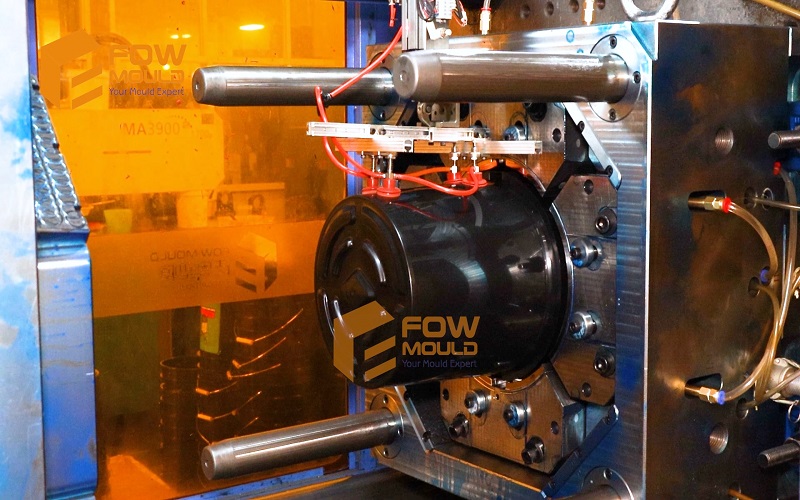
Advantage Of Injection Molding Services
Injection molding is a critical manufacturing method for producing complex components in large quantities, offering the following key advantages:
High Efficiency: The molding cycle is short, making it ideal for large-scale production.
High Quality: Products boast precise dimensions and smooth surfaces.
Versatility: It enables the creation of items with embedded metal or non-metal inserts.
Cost-Effectiveness: While initial equipment costs are high, automation and high-volume production significantly reduce per-unit costs.
As a result, injection molding services empower industries to efficiently produce intricate, high-quality parts at scale, meeting diverse demands ranging from consumer electronics to automotive applications, while optimizing both performance and profitability.

Comprehensive Plastic Injection Molding Services
Injection molding services offer comprehensive solutions that encompass the entire process from designing and crafting injection molds to manufacture plastic parts.
With more than four decades of expertise, FOWMOULD distinguishes itself as a premier provider of top-tier custom plastic injection molding services.
The versatility of the plastic injection molding is unmatched, allowing for the efficient fabrication of intricate components.
This includes not only customized plastic injections, but also swift production methods such as rapid injection molding along with advanced techniques like insert molding and overmolding.
Each offered service is meticulously adapted to fulfill specific client needs, guaranteeing that every finished piece precisely matches its intended design and operational purpose.
Custom Injection Molding
Custom plastic injection molding is a crucial process for producing complex and specialized parts across numerous industries. The technique enables the manufacturing of components with intricate shapes and precise attributes that might be unattainable through alternative fabrication methods.
In sectors such as automotive, critical elements like dashboards, bumpers, and interior trims rely heavily on injection molded pieces.
FOWMOULD offers tailor-made mold solutions from the inception of an idea to the production of the final item, guaranteeing greater adaptability in design and expedited turnaround times for prototype development and component delivery.
Their expert design team coupled with proficient technical training ensures seamless progression in bringing new ventures to fruition while aiding customers in perfecting their product designs and actualizing inventive concepts.
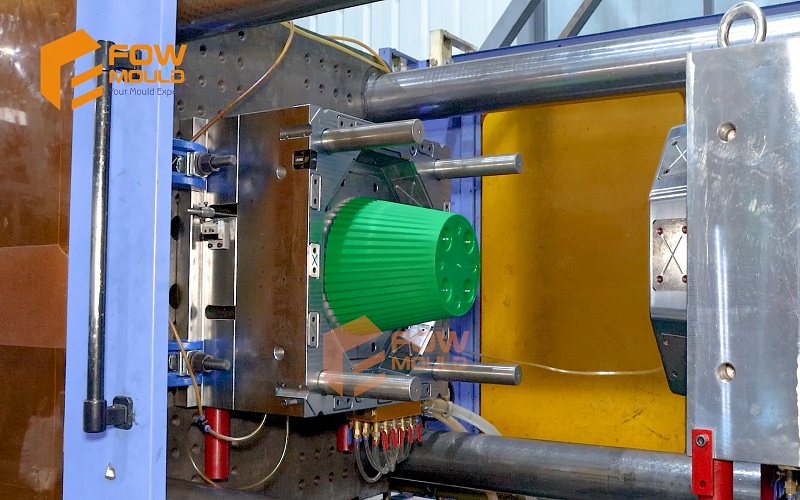
Rapid Injection Molding
Designed with speed and efficiency at the forefront, rapid injection molding facilitates the swift creation of parts compared to conventional techniques.
This method is exceptionally advantageous for projects demanding expedited delivery times since molded parts through rapid molding can be dispatched as quickly as within a single day.
Perfectly suited for prototype development as well as full production cycles, this technique delivers considerable benefits when it comes to quick design verification.
Aluminum tooling is often employed in rapid injection molding specifically for prototyping purposes, offering fast turnaround times coupled with no mandatory minimum order quantities.
This aspect renders it an economically viable option, particularly for small to medium batch sizes of injection molded components.
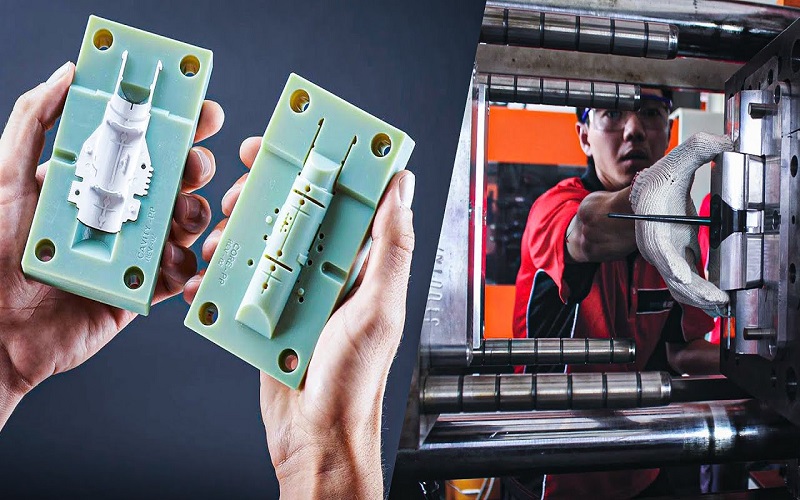
Insert Molding & Overmolding
Within the realm of injection molding, insert molding and overmolding stand out as advanced methods that bolster both the function and appearance of molded components.
The process of insert molding incorporates elements into the parts during fabrication, which introduces additional functional features final plastic part while facilitating intricate designs.
Conversely, overmolding permits producers to fuse varying substances to augment both the tactile sensation and visual appeal of their creations.
This approach is exceptionally beneficial for crafting items that not only attract consumers with superior aesthetic appeal but also offer heightened utility — including an enhanced grip or increased resilience.
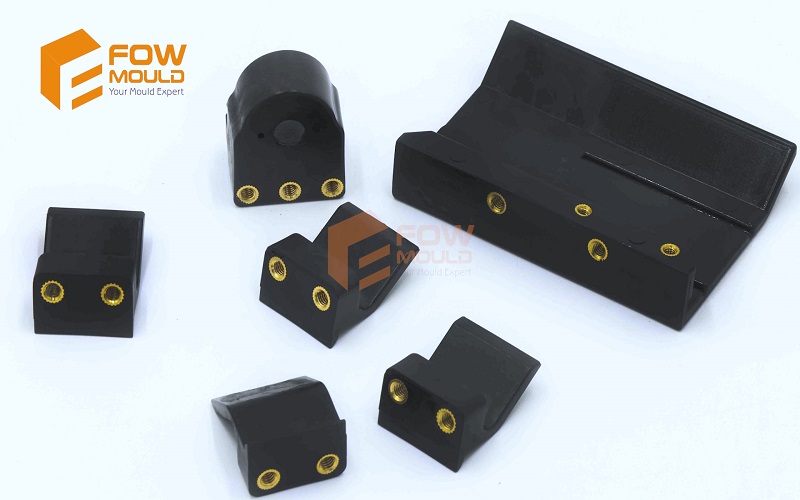
Material Options for Injection Molding
Selecting the appropriate material is essential in the plastic injection molding process since it has a significant impact on the properties, performance, and suitability of the completed item for its intended use.
Providers of injection molding services have capabilities to fabricate components using an extensive selection of more than 200 distinct thermoplastic materials. Popularly utilized substances include:
liquid plastic
metal
ceramic
glass
The decision regarding which injection molding materials to employ hinges upon the specific attributes required for the end product.
Subsequent paragraphs will explore different choices in materials available and their respective uses within various applications.
Thermoplastics
Thermoplastics are highly favored for injection molding because of their adaptability and outstanding mechanical characteristics.
Examples of prevalent thermoplastics include ABS, Nylon, Polypropylene, Polycarbonate, and Acrylic. Each provides specific advantages catering to different uses. For instance, the strength and pliability of ABS make it a prime choice for crafting robust consumer items.
Renowned for its durability and resistance to high temperatures, nylon is ideal for creating parts with mechanical applications such as gears and bearings.
Recognizable due to its exceptional chemical resistance properties, Polypropylene is frequently selected for manufacturing containers used in packaging or components within the automotive sector.
Meanwhile, Polycarbonate distinguishes itself by offering both formidable strength alongside transparency that’s essential when producing items like safety goggles or transparent elements.
Acrylic stands out mainly because it’s unlikely to shatter upon impact, which makes it an excellent material option where security measures around breakage are paramount, examples being greenhouse panels or solar energy modules.
In summary, thermoplastics injection molding owing not only to their capacity to be reshaped but also because they fulfill diverse practicality together with meeting certain aesthetic demands.
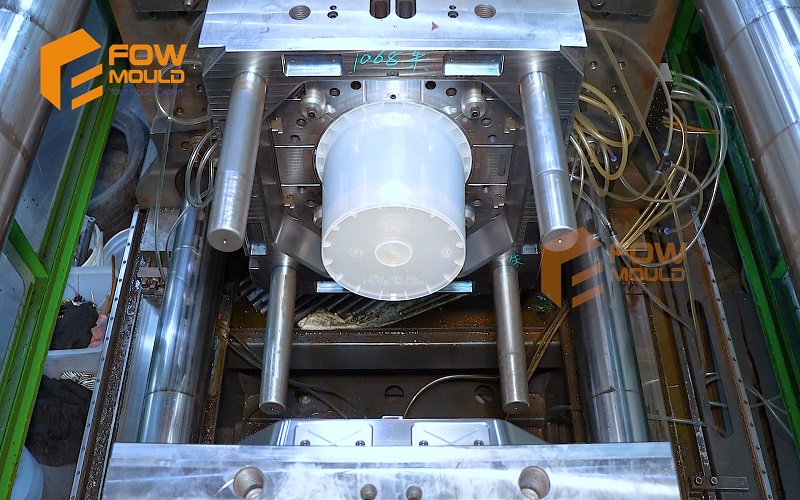
Liquid Silicone Rubber (LSR)
The process of liquid silicone rubber molding represents a contemporary technique that facilitates the fabrication of tailor-made components.
Utilizing a platinum catalyst within this thermosetting method, it guarantees the creation of strong and long-lasting products.
Liquid silicone rubber molding is adept at crafting parts that are not only flexible but also can endure severe temperatures and adverse environmental conditions.
Given its resilience and pliability, liquid silicone rubber is perfectly suited for tasks necessitating detailed precision and elaborate configurations.
Its capacity to perform reliably under tough circumstances renders it an optimal choice for diverse sectors such as automotive, medical devices production, and manufacturing consumer goods.
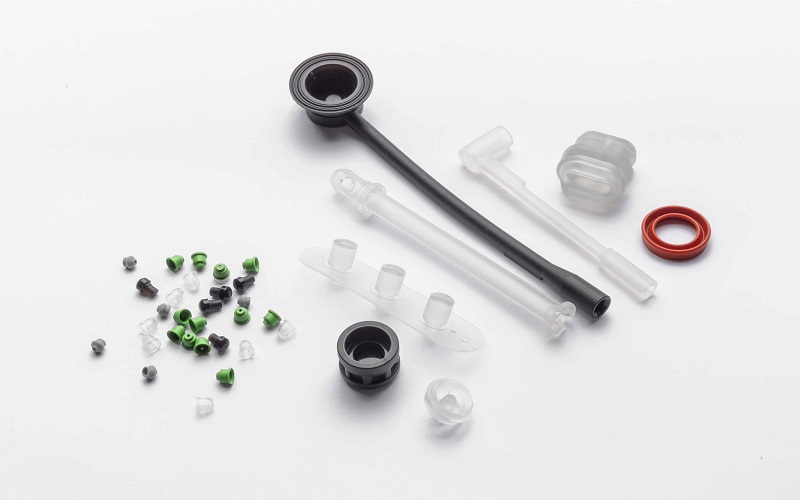
Advanced Materials
Thermoplastic elastomers, which possess the combined characteristics of rubber and thermoplastics, deliver both pliability and resilience.
This makes them an essential raw plastic material in injection molding that aim to meet the challenges of specialized applications where durability and consistent performance are paramount.
In sectors such as automotive, consumer goods, and medical devices, these materials are particularly valued for their exceptional mechanical attributes.
They offer heat resistance, chemical tolerance, and that quality systems can endure rigorous conditions—qualities crucial for manufacturing products that must maintain integrity under stress.
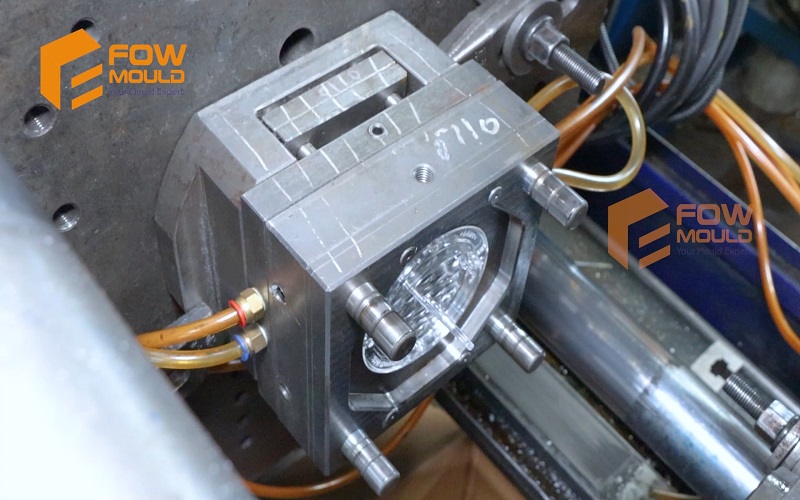
The Plastic Injection Molding Process Explained
The injection molding process encompasses several key steps, from melting plastic pellets to forming the final molded part.
Initially, the material is melted and injected into a mold cavity, where it cools and solidifies into the desired shape. This highly efficient process is ideal for producing parts at scale with low density and minimal material wastage.
Design submission is the first step in an injection molding . Designs can be submitted in various formats, including 2D and 3D CAD files, which are then evaluated for manufactureability.
The following section details the stages of the injection molding process, including scientific molding, design, quality control, and testing.
Mold Design And Creation
In injection molding services, designing and crafting molds are critical steps in the injection molding process. During the design analysis phase, potential challenges—such as undercuts or insufficient draft angles—can be identified, allowing adjustments that reduce mold costs.
The design is then refined by optimizing key elements like wall thickness and part layout to ensure smooth molding and prevent production issues.
Conducting a Design for Manufacturability (DFM) analysis further enhances this process by uncovering opportunities to lower costs while boosting the efficiency of plastic mold manufacturing process.
For prototype development, single-cavity molds prove especially valuable, enabling precise shaping of complex components and rapid design validation.
FOWMOULD leverages cutting-edge design software and high-precision CNC machining technologies to create molds that meet rigorous production standards.
By integrating these advanced tools and methods, FOWMOULD ensures top-tier quality in plastic mold manufacturing, laying the foundation for flawless production runs and high-quality final products.

Injection Molding Machine Operation
The operation of an injection molding machine ensures that both pressure and temperature are consistent, which is crucial for producing parts with uniform quality.
In the initial stage of injection, it’s important to keep the melted plastic at a steady temperature so it can properly fill the mold. Subsequent application of pressure guarantees that every cavity within the mold is filled during what’s known as the dwelling phase.
After solidification of the plastic material occurs, the opened mold then releases or ejects the completed piece.
The efficiency in manufacturing molds made out of plastic is significantly improved by using multi-cavity molds since they allow multiple identical components to be manufactured simultaneously per cycle. This approach proves exceptionally advantageous when dealing with high-volume production needs.
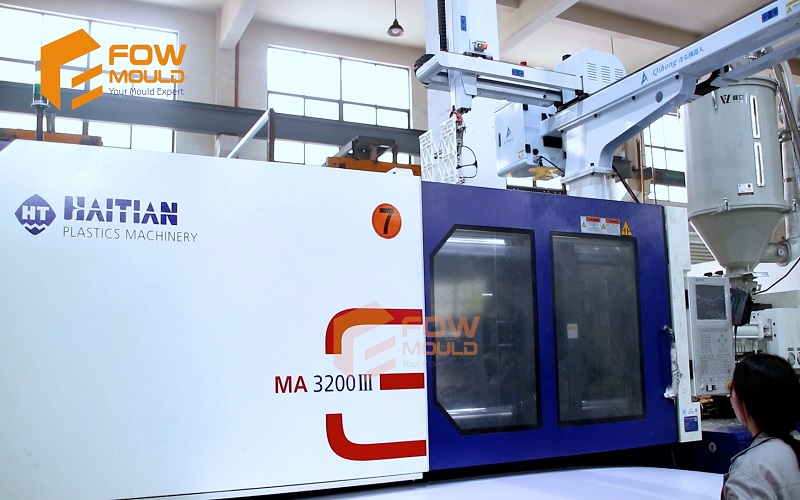
Quality Control and Testing
Ensuring consistent production of superior parts via the injection molding process necessitates meticulous quality control and testing.
Manufacturing partners who have obtained esteemed certifications such as ISO 9001:2015, AS9100 Rev D, ISO 13485:2016, and IATF 16949:2016 demonstrate a commitment to rigorous quality benchmarks and compliance with regulatory mandates.
In sectors like healthcare, the role of injection molding is pivotal for fabricating components that are not only high in precision but also meet critical health standards.
FOWMOULD prioritizes robust quality management by employing top-notch steel along with scrupulous manufacturing protocols to align with global criteria.
The fabrication of medical apparatus using the injection molding technique demands exacting precision while strictly upholding relevant regulatory norms. This ensures that every component produced by injection unit fits the essential specifications required in its application.
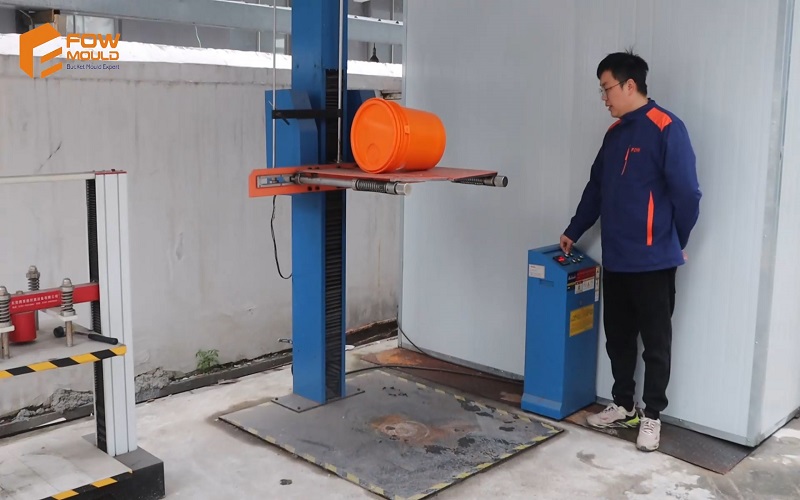
Tooling Options and Production Capabilities
It is crucial to choose the right tooling options for achieving efficiency and cost savings in the injection molding process.
FOWMOULD presents various tooling alternatives, such as aluminum molds, which stand out due to their affordability and quick production times.
These selections can positively influence the production capabilities by minimizing lead times and expenditure, thus boosting overall productivity in the manufacturing cycle.
With Fictiv’s GlobalFlex Tooling, manufacturers gain geographical adaptability that supports nearshoring and onshoring strategies, aligning with specific project requirements.
By utilizing a range of tooling choices, companies can elevate their manufacturing results by increasing both flexibility and efficiency within the injection molding process.
Prototype Tooling
Prototype tooling hastens the pace of product development, speeding up design validation and diminishing costs associated with development.
FOWMOULD supports clients in affirming the viability of designs with its prototype services, allowing for improvements and enhancements to be made prior to commencing mass production.
Parts can be produced via rapid injection molding in as little as a single day, contingent upon the specifics of the project.
At FOWMOULD, a skilled team dedicated to design works closely with customers to polish their product designs by providing critical insights and technical guidance during the prototyping stage.
This joint effort guarantees that not only will the end product perform as intended, but it will also be capable of being manufactured effectively while adhering to all necessary specifications and industry norms.
High Volume Production Molds
Multi-cavity molds employed in high-volume production amplify efficiency and slash costs by facilitating the manufacturing of numerous identical components within a single cycle. FOWMOULD’s yearly output of molds, which currently stands at 850 sets, is on an upward trajectory, showcasing their prowess in executing high-volume production.
Choosing production tooling leads to low volume production and to reduced prices per piece part, greatly enhancing cost effectiveness. Manufacturers harnessing these prolific production molds can realize scale economies. Thus rendering injection molding an economically viable method for extensive production batches.

Bridge Production Solutions
Solutions for bridge production enable manufacturers to move seamlessly from the stage of prototype development to that of full-scale manufacturing. This allows for a smooth shift into mid-level production volumes, circumventing the need for significant retooling.
Companies can leverage these solutions to effectively scale up their manufacturing processes. This ensures they are able to satisfy market demands while preserving both quality and cost-efficiency throughout the transition period.
Finishing and Post-Processing Services
Post-processing and finishing services play a crucial role in improving the quality and visual characteristics of injection molded parts.
These methods are employed to remove imperfections and elevate the aesthetic aspect of the end product, guaranteeing compliance with functional standards as well as design expectations.
FOWMOULD provides an array of enhancement techniques that refine both the functionality and aesthetics of injection molded pieces.
In post-production, applying finishes such as texturing, polishing, or painting is essential for achieving adherence to industry norms and fulfilling specific customer demands.
These steps are integral in assuring that injection molded components deliver on their intended use while also maintaining a high level of visual attractiveness in line with top-notch quality benchmarks.
Surface Finishes
The range of surface finishes for injection molded parts varies widely, extending from non-cosmetic surfaces to those with a high-gloss polish. This variety caters to the material and design specifications that might be required. Methods such as texturing, polishing, and painting are employed in crafting these finishes so as to comply with precise industry norms.
Selecting the appropriate finish is crucial for guaranteeing that the injection molded parts fulfill both their practical purposes and aesthetic expectations while conforming to set industry benchmarks. The choice of which finish to apply is contingent on the type of material used in conjunction with particular design directives aimed at delivering an end product that satisfies both utility and visual standards.
Secondary Operations
Additional processes that are carried out after injection molding, known as secondary operations, serve to improve the functionality and visual appeal of parts.
Techniques like heat staking, ultrasonic welding, and laser engraving are employed to enhance performance or fulfill precise design criteria. These steps are crucial for guaranteeing that the end product adheres to all essential specifications and functions correctly.
To achieve the preferred visual and tactile qualities in a product, surface finishing methods such as polishing, sanding, and texturing are utilized.
Molded parts often undergo common treatments like texturing for tactile feel, polishing for smoothness or glossiness enhancement, or painting to match particular industry standards—these techniques significantly influence how aesthetically pleasing the molded items appear.
Assembly and Packaging
Services for assembling and packaging are essential in getting injection molded products ready for market distribution. By effectively bringing together various injection molded components, assembly services complete the creation of final products that are set to be distributed.
These packaging options have been crafted specifically to safeguard goods while they’re being transported or stored, guaranteeing that these items reach their intended location without any damage.
Industries Served by Plastic Injection Molding
Injection molding is a manufacturing process employed across multiple industries such as automotive, medical, and consumer products. It enables the creation of components that adhere to the high-quality standards required by these various sectors.
FOWMOULD specializes in crafting molds that serve a wide range of uses, including but not limited to food packaging, logistics pallets, and thin-walled containers for different industry needs.
Automotive
Injection molding is a critical process within the automotive industry, enabling the efficient and high-quality production of key parts such as dashboards, bumpers, and electrical connectors. These components are vital to meet the stringent requirements of this sector.
Medical Devices
The process of injection molding is highly beneficial when manufacturing complex medical devices that demand high levels of precision and longevity.
Thermoplastic elastomers (TPE), which combine the processing benefits of plastics with rubber-like flexibility, are particularly apt for use in the medical field.
Thermoplastic polyurethane (TPU) resins receive acclaim for their elastic properties and resistance to chemicals, making them an excellent choice for items including gaskets and housings for electronics.
When it comes to fabricating intricate designs requiring both pliability and resilience, LSR (liquid silicone rubber) molding stands out as a preferred method in creating components used in medicine.
The capability of LSR to endure harsh temperatures and various environmental factors significantly contributes to its appropriateness in crafting medical devices. To Boost these components’ structural integrity and functionality, secondary procedures like heat staking or ultrasonic welding are often employed.
Consumer Products
The manufacturing process known as injection molding plays a crucial role in the creation of numerous consumer items, including everything from home appliances to toys. The production of food packaging frequently employs this technique due to its ability to offer both the durability and design flexibility that consumer products demand.
Ensuring functionality and visual appeal in consumer goods is achieved through injection molding, which addresses varied market requirements via streamlined manufacturing processes.
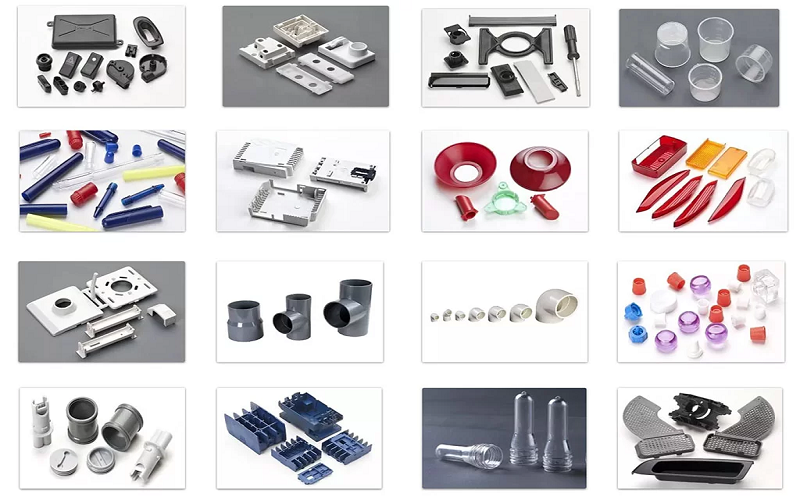
Cost Considerations for Plastic Injection Molding
Financial considerations are of paramount importance in an injection molding endeavor. The most significant expense is the cost of the mold, which has a considerable effect on the total budget for the project.
Factors that shape the injection molding quote and costs include the complexity of the part being produced, selection of materials, and quantity to be manufactured. Injection molding is respected for its ability to produce high volumes of uniform parts with efficiency and at a reduced cost.
The economic framework associated with injection molding encompasses elements such as expenditures on molds, choices regarding materials, and production magnitude. Grasping these financial aspects enables companies to steer their decisions towards enhancing cost effectiveness within their injection molding projects.
Initial Tooling Costs
In the realm of injection molding projects, the preliminary expenses for tooling are notably substantial. The baseline price for creating injection molds often begins at $1,495. This cost can fluctuate depending on how intricate the part design is and the projected quantity of production.
Injection molding becomes more economically viable when it’s used to manufacture large quantities of parts because scaling up production leads to a decrease in per-unit costs.
Molds that are geared towards high-volume production amplify efficiency within operations and contribute to diminishing expenses.
When devising mold designs, several critical aspects must be taken into account such as material selection standard process used, part complexity, and anticipated output volume. Streamlining designs by removing extraneous elements not only helps trim down mold expenditures, but also enhances overall cost-effectiveness.
Production Costs
Factors like cycle times, material costs, and production batch size influence injection molding production costs. Tooling costs for injection molds can range from $100 for basic 3D printed molds to over $100,000 for intricate multi-cavity steel molds.
The cost for custom injection molds can range from $1,000 to over $80,000, depending on the design and production requirements.
Increasing production quantities lowers the cost per part due to economies of scale. Cycle time, which dictates the speed of part production in each run, also affects production costs per part. By optimizing these factors, businesses can achieve cost efficiency and reduce the overall expenses of their injection molding projects.
Strategies to Reduce Costs
Producing multiple parts in each cycle with multi-cavity molds effectively reduces the cost per unit, as more items are produced at once.
This increases the production volume and distributes the initial expense of tooling across a greater number of parts, which diminishes the average cost for each piece. It’s essential to boost production efficiency when aiming to slash expenses in injection molding initiatives.
Enhancing production processes and boosting output enables companies to decrease their total costs associated with injection molding. By adopting these tactics, they can keep projects economically viable without compromising quality standards.
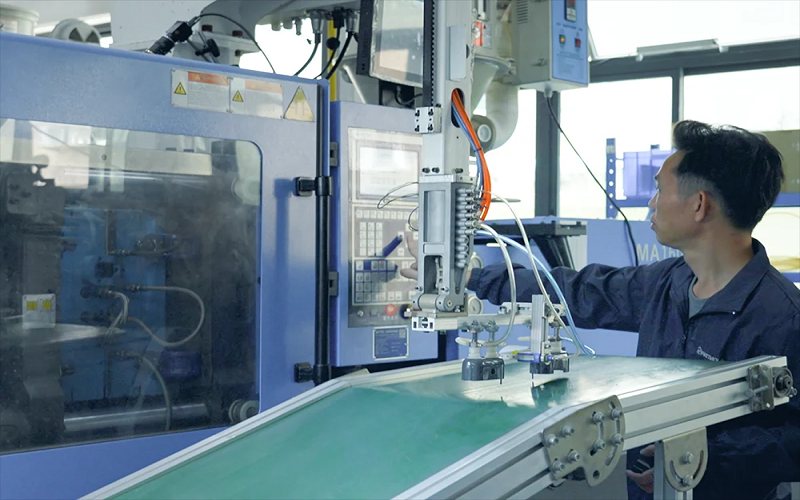
How to Get Started with Your Injection Molding Project
Beginning an injection molding project requires a methodical process, beginning with the submission of design documentation.
This encompasses providing 2D and 3D CAD files, conceptual drawings, or physical product examples for review. Utilizing online portals facilitates rapid pricing evaluations and design feedback, accelerating the quotation stage.
Following confirmation of designs and examination of preliminary samples, manufacturing can be launched without delay. The inclusion of assembly and packaging offerings within the production line can enhance efficiency in preparing goods for distribution while also potentially diminishing expenses.
Submitting Designs
Submitting designs is the first step in starting an injection molding project. Submit design files in various formats, including 2D and 3D, for thorough review. Conceptual sketches are also acceptable for initial design submissions.
Online platforms can provide instant quotes for injection molding by allowing users to upload CAD files and customize parameters.
Receiving Quotes
Quick and accurate quotes are crucial for successful injection molding projects. Online quote requests expedite the process, enabling customers to receive quotes without minimum order requirements.
FOWMOULD provides order tracking services, offering progress reports or photos within 2 hours of submitting an order.
Starting Production
After the design has been approved and initial samples have been examined, manufacturing kicks off. It typically takes around 50 days from when the design is submitted to receive T1 samples.
Once these samples are given the green light, mass production can begin, with a standard lead time of about 10 business days.
Adhering to this procedure guarantees an efficient flow from conception to execution, yielding superior outcomes in injection molding ventures.
By following this methodical process, every phase of the project is managed effectively right from the outset when submitting designs through to delivering the finished goods.
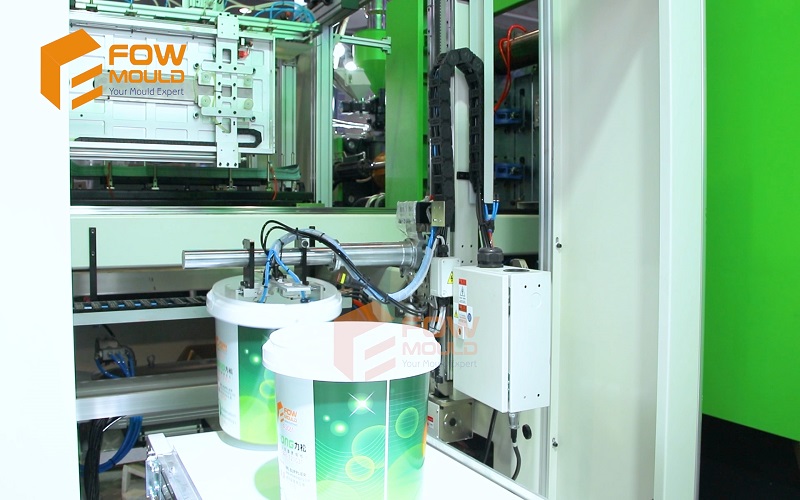
Summary
In summary, the injection molding services offers a dynamic and effective solution for producing high-quality items across various sectors.
FOWMOULD provides an array of injection molding services including custom injection molding, rapid injection molding, insert and overmolding techniques that guarantee both superior production standards and adaptability in design.
By gaining insights into the selection of materials, tooling competencies, and budget factors, companies are able to refine their projects within this domain to achieve maximum efficiency and economic advantage. Engage with the advancements in manufacturing through injection molding to actualize your groundbreaking concepts.
Frequently Asked Questions
What types of products can be made with injection molding services?
Plastic injection molding is incredibly versatile, producing items like automotive parts, household goods (e.g., containers, toys), medical devices, packaging, and electronics casings. It excels at creating precise, complex shapes for both small and large-scale production.
How long does it take to create a mold for injection molding?
The timeline depends on complexity. Simple molds might take 2–4 weeks, while intricate designs could require 6–12 weeks. Companies like FOWMOULD often expedite this with advanced tools, delivering prototypes in as little as 7 days.
What materials are used in injection molding services?
Common injection molding materials include thermoplastics like ABS, polyethylene, polypropylene, and polycarbonate. The choice depends on the product’s needs—durability, flexibility, or heat resistance—and some services offer biodegradable or recycled options for sustainability.
How does plastic injection molding save costs compared to other methods?
While initial mold costs can be high, the process becomes cost-effective in high-volume production due to fast cycle times, minimal waste, and automation. This reduces the per-unit cost significantly over time compared to alternatives like 3D printing or machining.
Can injection molding services support small businesses or startups?
Yes! Many providers offer prototype development and low-volume runs using single-cavity molds, making it affordable for small businesses or startups to test designs before scaling up. Flexible services like those from FOWMOULD cater to diverse client needs.
